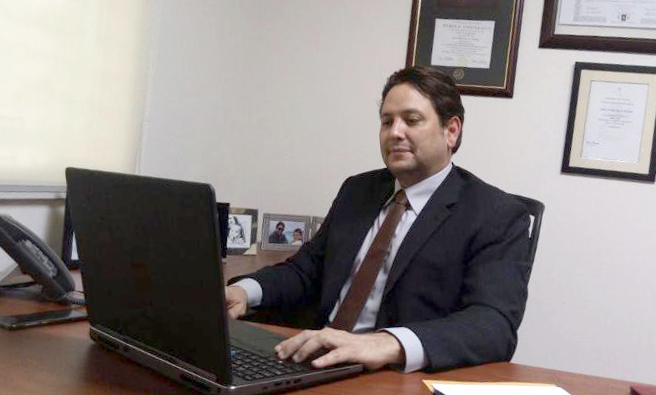
New IDAAN director after an unusual strike
by Eric Jackson
Theoretically, the top spot at Panama’s national water and sewer utillity (which does not, however, encompass all of the rural aqueducts) is supposed to go to a competent civil engineer. That, however, is rarely the case. It’s a political patronage job. Usually a dead giveaway when a new IDAAN director is appointed is the structure of what is said about him or her. “He studied at” or “she comes to the post from a job at” are all de riguer. But when you look in vain for “he designed,” “she built,” “he managed” or such — then you have a pretty good idea. When the credentials do not include “previously served in IDAAN as” that’s more or less confirmation. The more usual credentials — most frequently “is related to” or “served on the campaign committee or in the party as” — are never stated.
So after a remarkable nine-day strike at an IDAAN whose previous director left nearly a month before, on October 12 the National Assembly approved Juan Carlos Varela’s appointee for a new IDAAN director. He’s Juan Felipe de La Iglesia Tobón. He studied construction management at Purdue, then got an MBA from an undisclosed institution in Barcelona. He worked in President Varela’s inter-institutional Public Infrastructure Coordinating Unit before coming to IDAAN.
So what was so remarkable about the IDAAN workers walking off the job again? While there were some complaints of seniority raises that did not happen on time, those were side issues, designated for later discussions in the agreement that ended the strike. The walkout was mainly about unpaid private sector suppliers for the utility. As in, arrears meant no timely delivery of a backhoe desperately needed for urgent repairs. As in, unpaid suppliers were not delivering the chemicals needed to treat water taken from surface sources at several plants in the Interior to make the stuff safe for human consumption.
So why would the utility workers care all that much about customer complaints? Because they would as usual be the ones blamed, and for an outbreak of water-borne disease that could be a serious accusation indeed.
The full litany about IDAAN could fill many books of horror stories, but there are some notable milestones along the way. Like in the run-up to the resignation of the prior IDAAN director, Julia Elena Guardia, at the beginning of September. In July, beset by complaints from many sides, she blamed “the bureaucracy” and said that if the organization went from being an institute to an authority — that is, from a government department to a semi-autonomous entity that could privatize its services — then the jobs undone might get done.
(Guardia came into office in September of 2014. She was certified in courses taken in the Netherlands in sanitary engineering and sewer systems and has an MBA from Nova Southeastern University. She worked as a consultant before coming to head IDAAN. Most importantly, she is President Varela’s first cousin.)
In the Moscoso administration the government was divided up into political patronage fiefdoms, with Ricardo Martinelli’s Cambio Democratico party as a junior partner. That made the now jailed ex-president minister of canal affairs, and put Guido Martinelli at the head of IDAAN. Guido deducted Cambio Democratico party dues from the paychecks of IDAAN workers whether they wanted to join or not, and although one might think that this illegal practice would have produced the ouster of both Martinellis that was not the case.
In the Torrijos administration IDAAN bought a water treatment plant in Chilibre for more than $1 billion. That there were serious flaws with it when delivered didn’t seem to bother either Torrijos or the IDAAN management — the ribbon was cut before the government changed hands and that was the main thing to them.
Martinelli brought in this more dictatorial than usual management style, such that nobody at IDAAN would take an emergency decision and the top folks couldn’t be bothered to drop everything and come into work in the event of an emergency. So record flooding on the upper Chagres River washed muddy water — trees and all — into the Chilibre plant and nobody who could have acted felt authorized to act to shut down the water intake valves at once. Months of water outages, tainted water and circular finger pointing ensued, with some truly horrific tangents spinning off of the metro area’s water system woes from that omission.
So should be be assured by an agreement to end the strike by which the Varela administration said it would get that backhoe at once and also restock the water treatment plants from which much of the Azuero Peninsula’s population drinks with the necessary chemicals? Should Panamanians be confident in the new leader? At least he gave us a small reassurance. He said that his first task will be to collect arrears in water and sewer bills. That has generally meant poor neighborhoods and more affluent households having their water cut off, with the latter paying up and water riots in the former. There need be no shutoffs to coerce payments to have water riots, though — people who go long enough without will often block the road until the police show up with their helmets, shields and full regalia. But Mr. de La Iglesia assures us that IDAAN will not be privatized, which probably means that there will be no nationwide water uprising.
Fixing systems that have been neglected for decades? That’s another matter. Maybe the new IDAAN director will surprise us.
~ ~ ~
These announcements are interactive. Click on them for more information.










